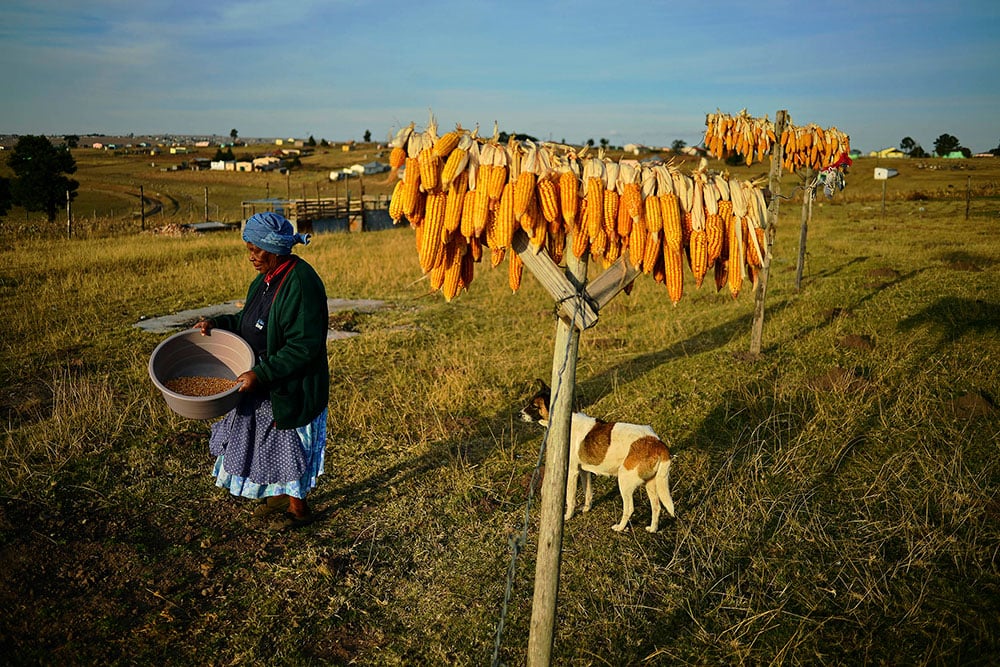Small family-run farms can help the African economy grow.
I recently joined more than a dozen of the world’s sharpest minds on African agriculture in an unprecedented effort to devote an entire issue of the influential magazine Foreign Affairs to consider the future of the African farmer in our digital age.
I wanted to establish one simple fact: agriculture is poised to drive a new era of inclusive economic growth for Africa – but only if we focus on the small, family-run farms that are Africa’s main source of employment and produce the majority of what Africans eat.
The opportunity is clear. Africa’s growing population and expanding middle class are creating a domestic market for food products that will be worth $1-trillion by 2030. But to tap into this opportunity for Africa’s smallholder farmers, we need to stop thinking about them as subsistence growers and embrace their potential to generate income.
The very word “subsistence” implies a struggle to survive, not an effort to build a business that thrives. That’s why no child of an African subsistence farmer wants to be a farmer. For the most part, they remember farming as a trade that kept them poor, because, for the majority of Africa’s farmers, agriculture is a classic poverty trap. Subsisting becomes a full-time job. But African farms are fully capable of becoming profitable businesses.
Today, most farmers produce a fraction of what their lands can yield, mainly because they are not using improved seeds or fertilizers. In Uganda, for example, 87% of smallholder farmer use saved grain as seed, although there are new varieties that could quadruple their yields.
One reason for their reluctance to purchase new seed is that most African farmers operate in an environment that always has them on the verge of destitution. It’s true that many lack access to yield-improving farm inputs, including seeds, fertilisers and information. But, more importantly, they rely on saved seeds because they know how they will perform. They cannot afford to gamble with the unknown.
Many African farmers also wonder why they should invest in boosting production when they lack access to markets where they could sell their surplus. In the Democratic Republic of the Congo, the 11th-largest country in the world by area, there are fewer than 2 400km of paved road – about the same as what you would find in a middle-sized American city. And when African farmers do manage to get their produce to market, they often fail to get a fair return because they lack insights into commodity pricing.

If farmers can be helped to use new, improved seeds, they can develop profitable make an economic contribution. (Carl De Souza, AFP)
So how do African farmers, a huge constituency that comprises 70% of our population, get beyond subsistence? For starters, governments and the development community can empower African farmers with more options in seeds, fertilisers and market opportunities.
The good news is that over the past decade we have learned a lot about the local seed and soil needs on African farms. And we have seen many organisations intensify their efforts, including plant breeders at the Consultative Group for International Agricultural Research centres and soil experts at the International Fertilizer Development Centre.
Also, new efforts such as the African Fertilizer and Agribusiness Partnership are providing fertiliser blends suited to specific soil conditions. There are innovative ways to scale up these solutions, too.
In parts of Kenya, Tanzania and Mozambique, there are nongovernmental and private-sector partners linking smallholder farmers with trusted local people who provide seeds, fertiliser and other supplies, as well as training in their proper use. Adoption rates are as high as 70%, because, if given a chance to test them, farmers are willing to pay for inputs.
Digital innovations are accelerating the shift to market-oriented agriculture. More than 750-million rural Africans already use cellphones, which is why Nigeria now delivers seed and fertiliser vouchers directly to farmers through their phones. In its first year alone, the programme reached 1.7-million farmers and helped them produce an additional 8.1-million tonnes of food.
When I took office as Rwanda’s agriculture minister, I knew Africa’s food problems were caused not by African farmers but by our own shortcomings in offering them solutions. We embraced policies that addressed their challenges and, between 2005 and 2014, two million Rwandans (20% of the country’s population) lifted themselves out of poverty. Average annual income rose from less than $250 to almost $650. The World Bank attributed 65% of this increase to growth in the agricultural sector.
We didn’t get everything right in Rwanda, but the commitment to smallholder agriculture shows what’s possible. Now we need to see this kind of commitment spread across Africa. Give our farmers the opportunity to prosper and they can cultivate a promising economic future that delivers benefits for all Africans.
Agnes Kalibata is the president of the Alliance for a Green Revolution in Africa and a former minister of agriculture for Rwanda. The special issue of Foreign Affairs was published on February 15.